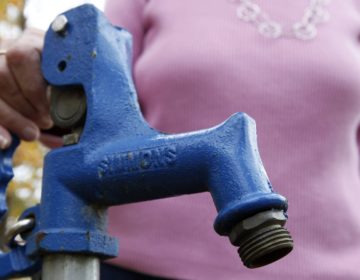With nation’s first city-owned mussel hatchery, Philly employing bivalves in battle to improve water quality
Listen 4:57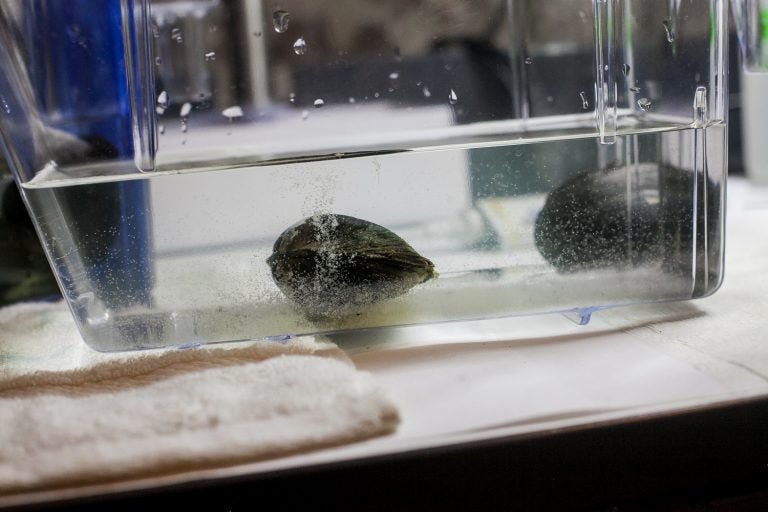
An Alewife Mussel expells its larva, known as Glochidia, which looks like a combination of air bubbles and cloudy milk. (Brad Larrison for WHYY)
Freshwater mussels function as nature’s water treatment plants. Each animal can filter up to 600 gallons of water per month. And when working together, they can dramatically clean the water of the rivers they live in.
But the Delaware River Basin is running out of them. And the ones left are not reproducing nearly enough. But that’s about to change.
On Tuesday, the City of Philadelphia and five organizations — The Partnership for the Delaware Estuary, Drexel University’s College of Arts and Sciences, The Academy of Natural Sciences of Drexel University, Independence Seaport Museum, and Bartram’s Garden — committed to create a large-scale mussel hatchery expected to bring millions of baby mussels back into the river. The facility will be part of a multi-site production and educational initiative called the Aquatic Research and Restoration Center.
The mussel hatchery, which will be located at Bartram’s Garden, already got funding for construction from the state of Pennsylvania — 7.9 million through Pennsylvania Infrastructure Investment Authority. The hatchery, which will be owned and operated by the Partnership for the Delaware Estuary, will be the world’s first that is dedicated to restoring mussel beds to promote clean water. Construction could begin next year.
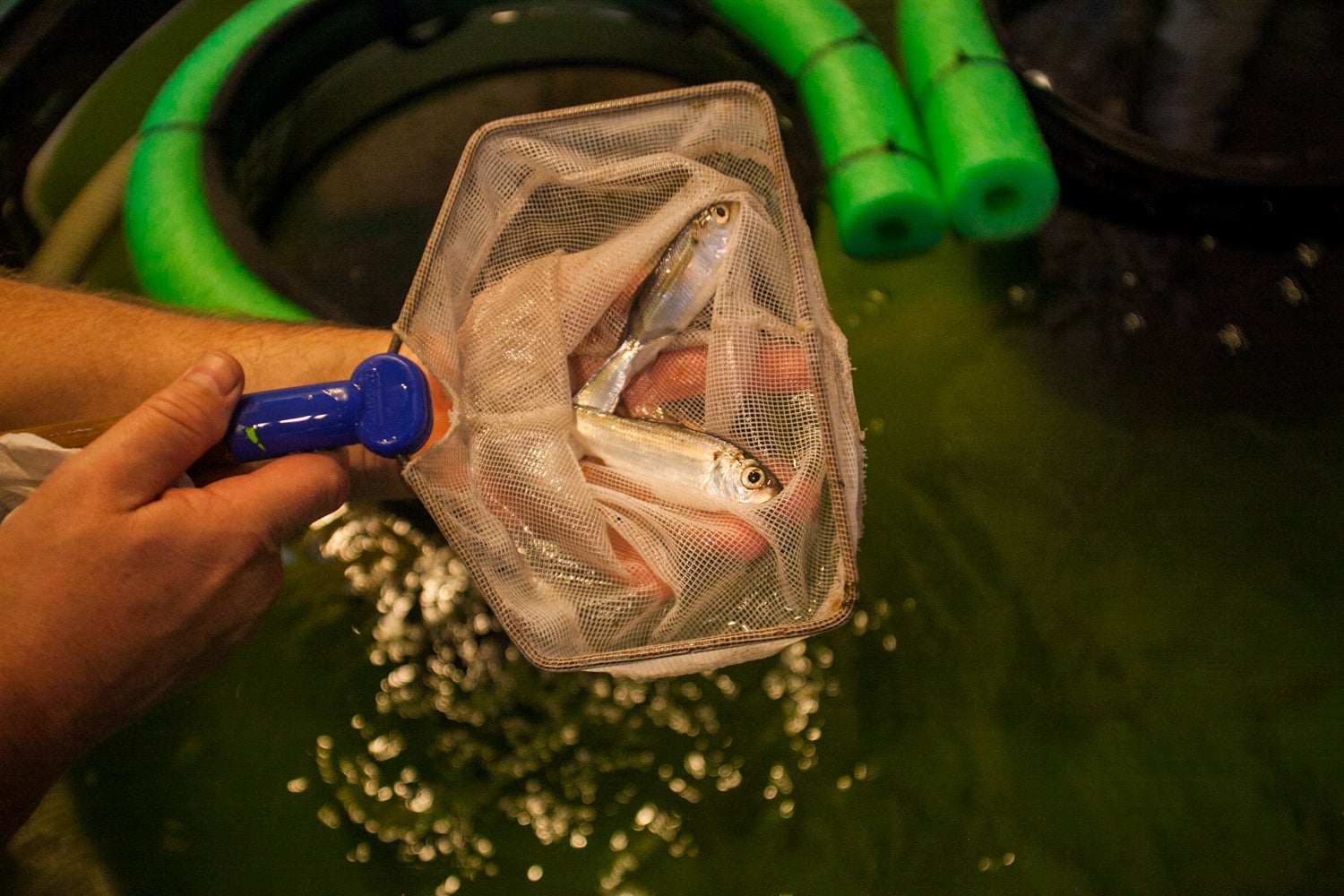
On a recent Wednesday, seven scientists gathered at a small city-owned hatchery located at Fairmount Water Works, around a water tank the size of a shoebox. They stared at a female mussel, waiting for her to give birth.
“Oh! You see that?,” said Danielle Kreeger, lead scientist with the Partnership for the Delaware Estuary, when the mussel released what looked like a white cloud of baby mussels. Kreeger has been studying mussels in the Delaware for the last 20 years.
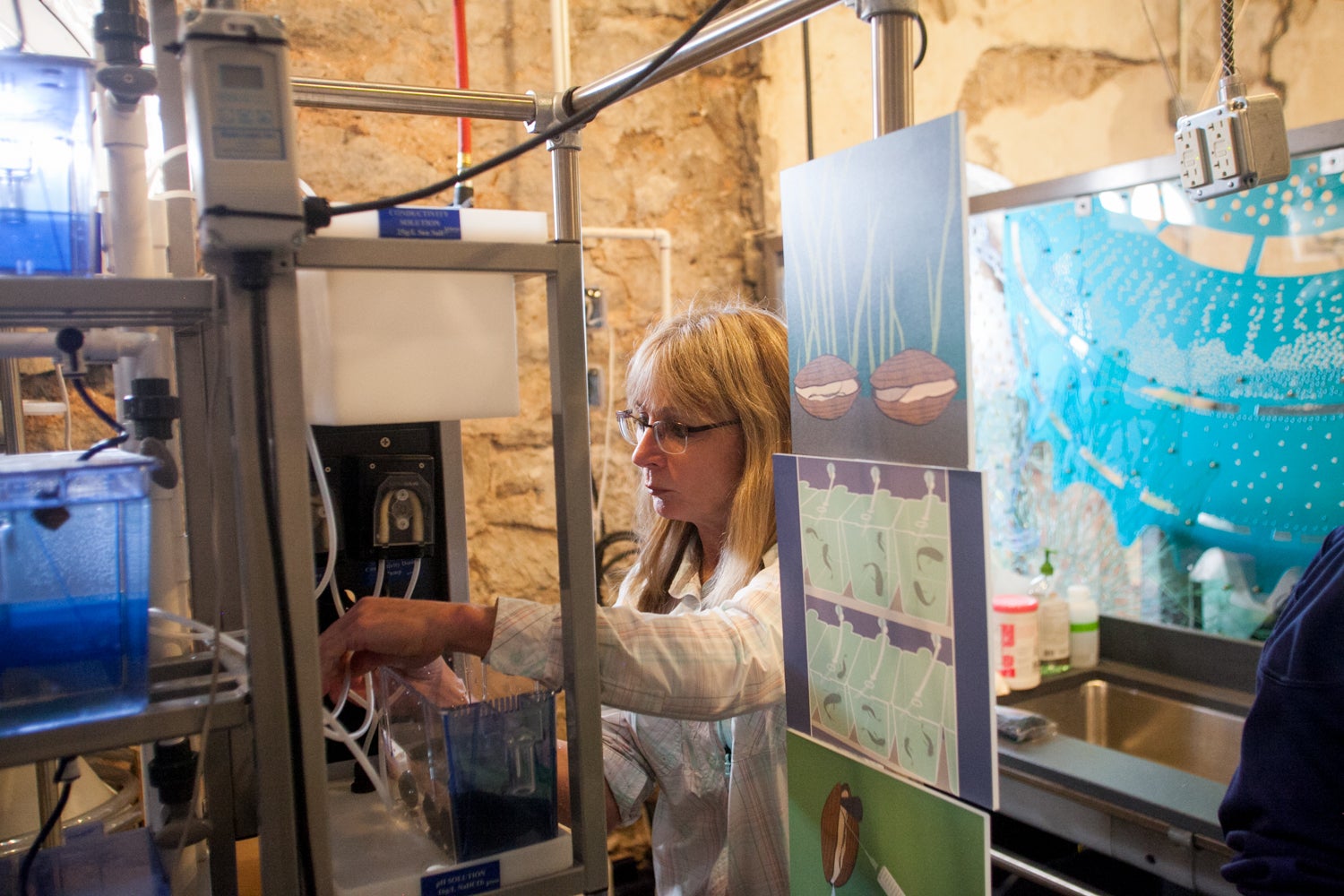
“It’s puffing, it’s pulsing it out in plumes. It’s like contractions when you’re giving birth,” said Kreeger. “She’s basically bearing her babies. Here they come, they’re coming out… wow!!!”
One mussel releases about 100,000 babies, but not all of them will make it through. Female mussels carry their babies just like humans for up to nine months. But to be able to survive, baby mussels, which look like tiny pac-men under a microscope, need a fish. And not just any fish. Every species of mussel uses a specific species of fish. The babies attach to the fish gills and travel with them for a couple of weeks, until they’re big enough to form a shell, and drop off into the river bed.
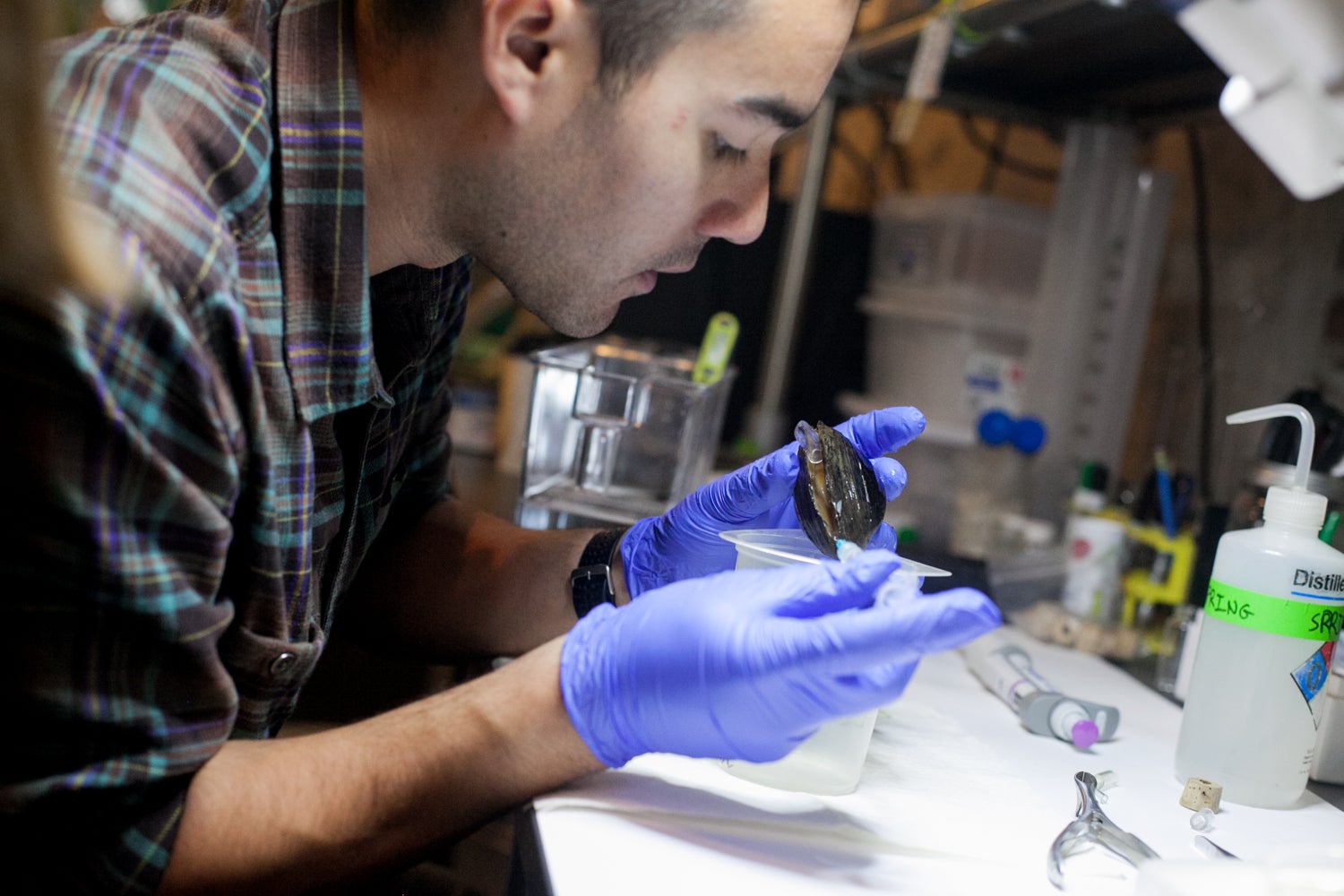
If everything goes well in the lab, in less than a year, these mussels will be in the Delaware River basin, cleaning the water we drink everyday. They will be joined by plenty of friends in the coming years as the city’s research and restoration center, a scaled-up version of the Fairmount exhibition lab, gets up and running.
Kreeger says freshwater mussels are underappreciated.
“Everyone loves oysters, you know, we eat them. But freshwater mussels are like the ultimate underdogs,” she said.
Kreeger says even though freshwater mussels can’t be eaten, they play an enormous role in river ecosystems.
“Each animal will filter 10 to 20 gallons of water a day, just like a Brita filter in your kitchen. They remove all these microscopic particles,” Kreeger said.
Mussels don’t only clean water, like trees do with air. They also provide food and housing for fish and other species, like coral reefs do in the ocean. And they can live for almost 100 years.
“They’re like conveyor belts — pulling material out of the water, cleaning the water, using some and enriching the bottom,” Kreeger said.
Roger Thomas, a scientist at The Academy of Natural Sciences, says before the 1950s, mussels covered the Delaware River basin.
“The Schuylkill used to have mussels all the way to the headwaters. Now they’re gone,” Thomas said.
Mussel habitats got destroyed, rivers were contaminated and dammed — preventing fish to distribute them —, and people took too many of them, sometimes looking for pearls.
Kreeger says 95 percent of the river watershed’s mussels have disappeared.
“We’ve seen the range, the distribution, shrink. We’ve seen the numbers of animals drop. And in many of our remaining mussel beds, there are no natural reproduction going on; there’s no juveniles to be found anywhere,” she said.
This is a big problem. Without a source of new mussels, it’s very difficult for scientists to repopulate the river.
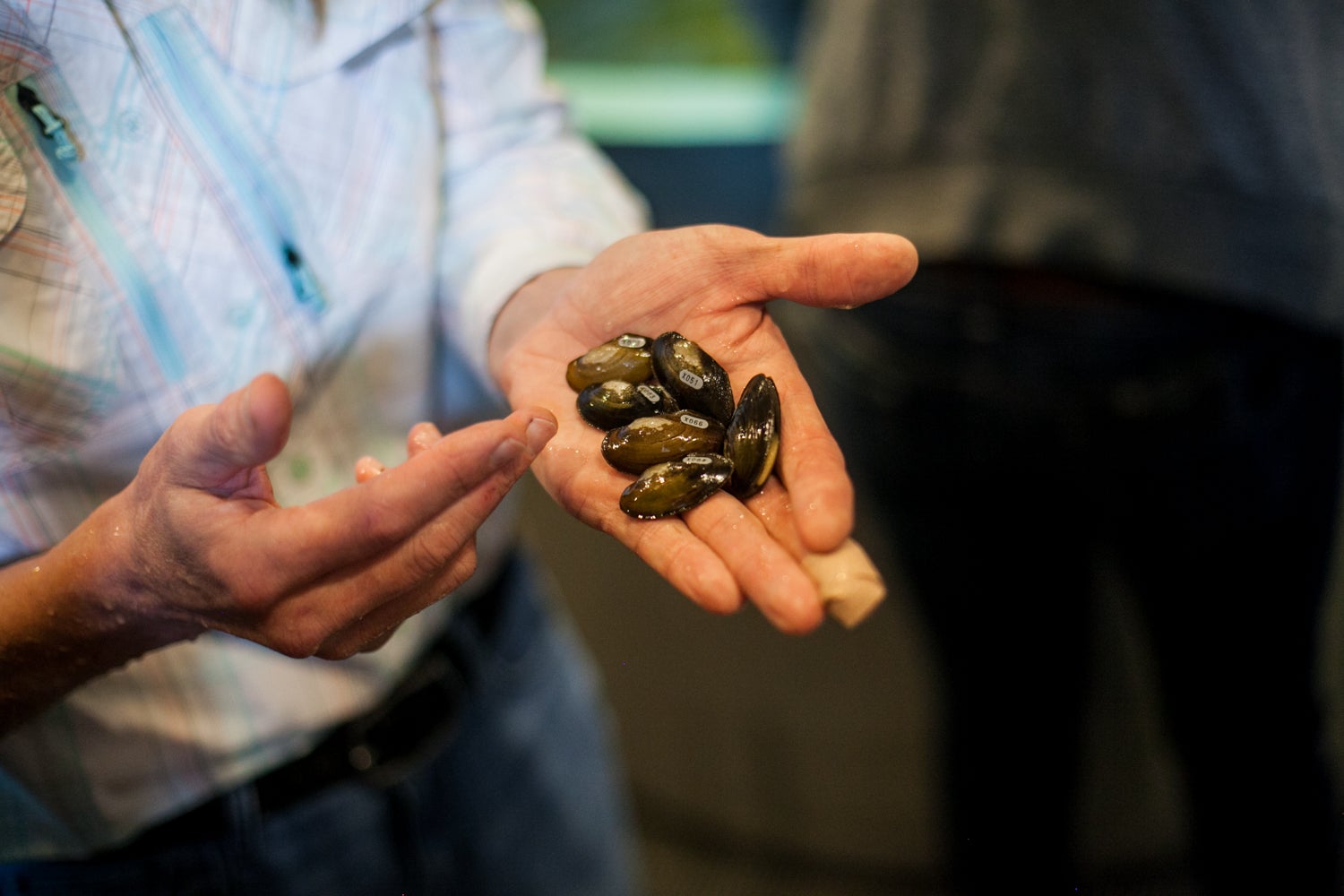
Last year, the city opened the exhibition mussel hatchery in the Water Works center, next to the Art Museum. And it’s been a good start. More than 25,000 visitors have learned about freshwater mussels and scientists have been able to successfully produce about 10,000 mussel seeds of two species.
But Kreeger said the hatchery is too small. To repopulate the river beds and drastically improve water quality, she said the city needs a much bigger hatchery.
The new large-scale commercial hatchery, which will open sometime within the next three years at Bartram’s Garden, will allow that, producing about a million baby mussels every year. This will include the possibility of selling mussel seeds to populate and restore other areas of the watershed when needed.
But what will make this production hatchery unique in the world, Kreeger said, is that it’s goal is not only to preserve endangered mussels, but to restore mussel beds to ultimately clean water.
“The possibility that mussel restoration will materially contribute to water quality and swimmable/fishable conditions is very plausible,” Kreeger said.
Lance Butler, a scientist with the Philadelphia Water Department working on the hatchery says investing in mussels will also save taxpayers money. The city is already investing in gray and green infrastructure for water quality. By using living organisms, the Water Department is adding what Butler calls “blue infrastructure” to help them do the work.
The center will also include a shad hatchery to be located at the Independence Seaport Museum. There, shad and potentially other fish will be grown alongside educational exhibits for students at all levels.
Philadelphia’s gets drinking water from the Schuylkill and the Delaware rivers. Butler said if one mussel living can filter 10 to 20 gallons of river water a day, imagine what tens of millions can do.
ucational exhibits for students at all levels.
Philadelphia’s gets drinking water from the Schuylkill and the Delaware rivers. Butler said if one mussel living can filter 10 to 20 gallons of river water a day, imagine what tens of millions can do.
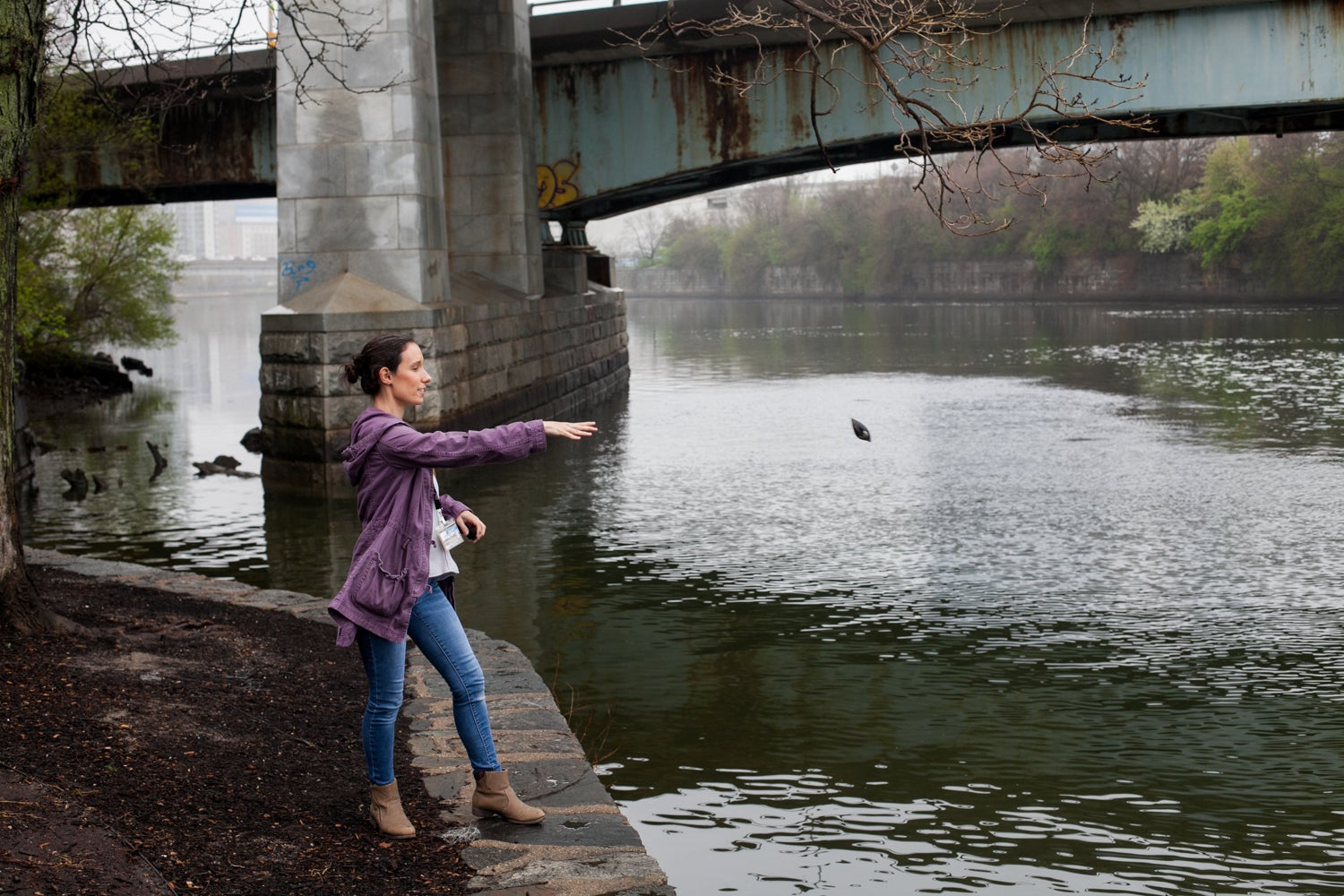
“They are doing the work for us, before the water comes in,” Butler said. A Philadelphia drinking water treatment facility cleans anywhere from 80 to 160 million gallons a day, so it will take 8 to 16 millions mussels to do their work.
That’s a lot of mussels, but Butler is confident the bivalves — and their human colleagues at the hatchery— are up to the challenge.
“They are our ecosystems scrubbers,” he said. “They are mini water waste treatment plants.”
WHYY is your source for fact-based, in-depth journalism and information. As a nonprofit organization, we rely on financial support from readers like you. Please give today.





